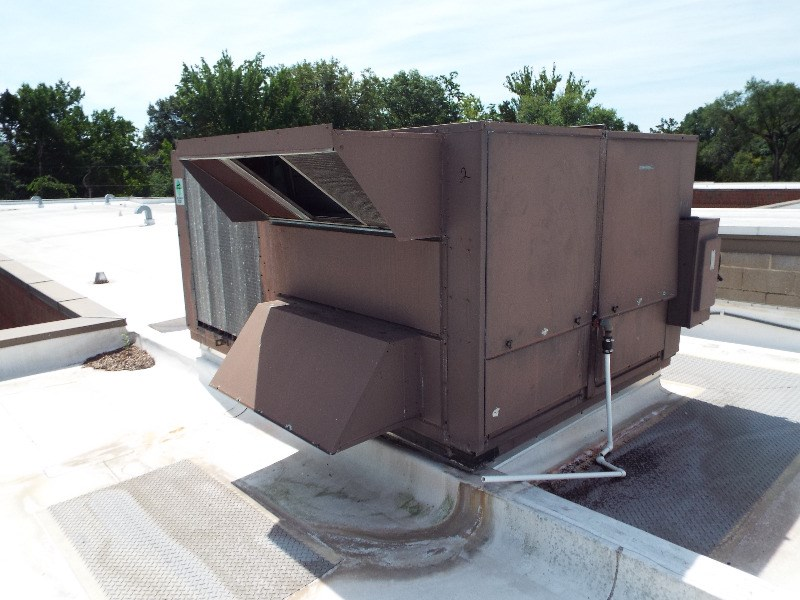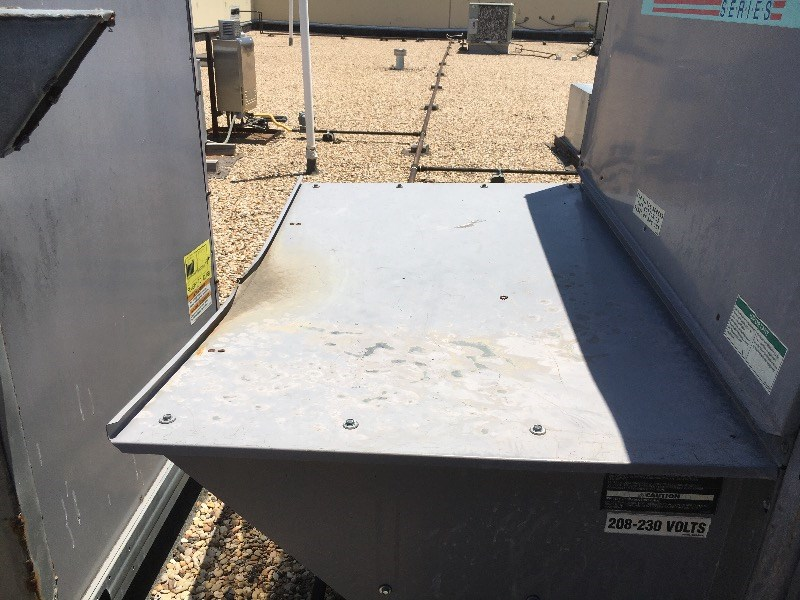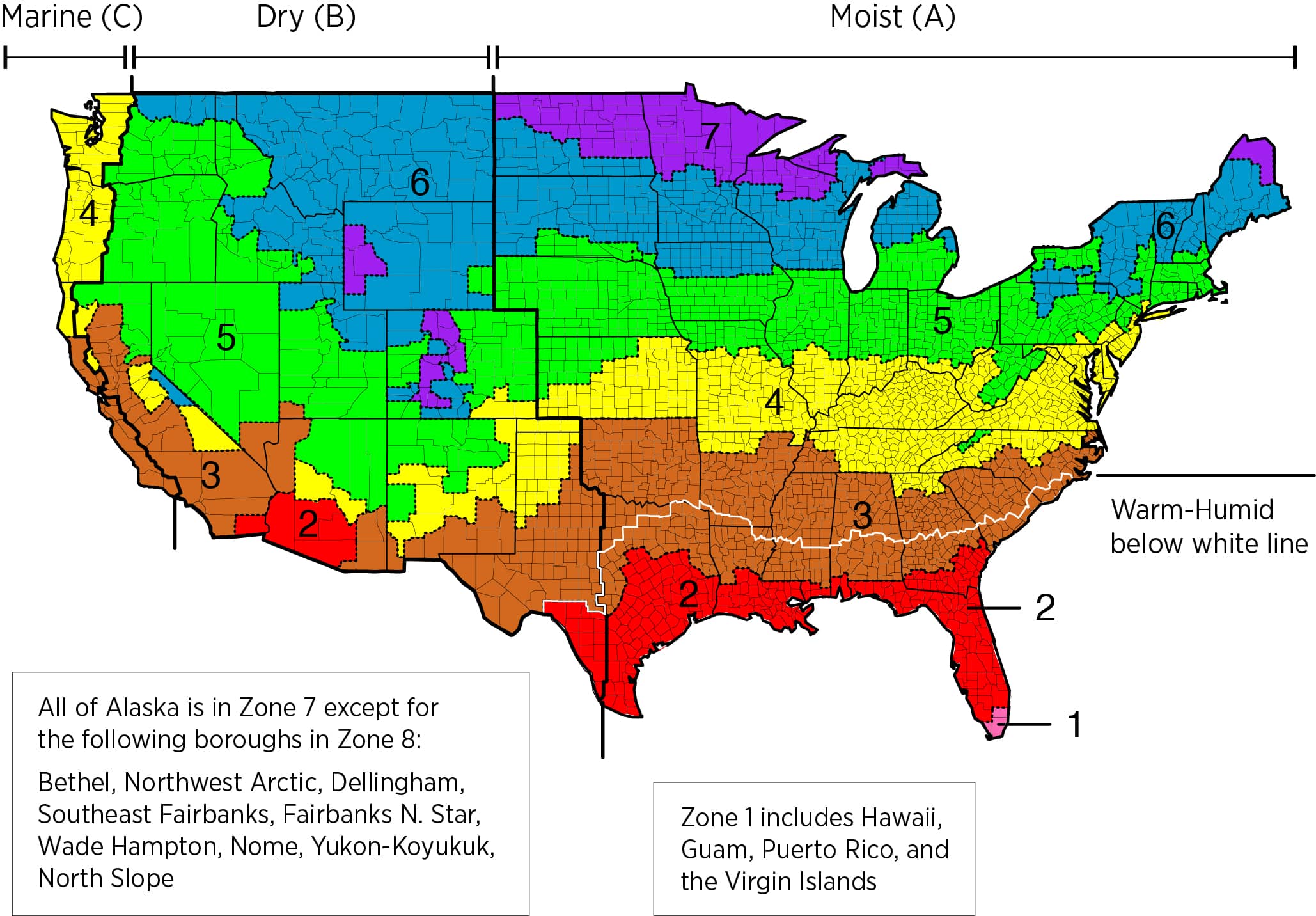Economizer Basics: Who Uses Them, Where They’re Required, and Why They Wind Up in Claims
Economizers, which can be added to the rooftop package units frequently used at commercial properties, have a variety of sensors and other components to gauge if outdoor temperatures and humidity levels are mild enough to give the traditional HVAC system a break. Outside air is applied instead of mechanical cooling to maintain conditions inside.
These components allow policyholders to reduce their energy consumption, but economizers are also included in claims. Adjusters should know how these components work in case a damper or sensor failure winds up on their desks.
A Sensory Experience
 Economizers use a system of sensors and vents to maintain proper temperatures inside using outside air.
Economizers use a system of sensors and vents to maintain proper temperatures inside using outside air.
Externally, economizers look like stacked vents attached to the outside of a rooftop package unit. But multiple components make up this equipment, including the sensors that read temperature, heat, and humidity levels, and the dampers that regulate how much air is let in or out. Enthalpy economizers regulate the use of outside air based on the enthalpy, the amount of internal energy within a system combined with the product of its pressure and volume.
Types of Economizers:
Dry Bulb Economizers: Sensors detect if outdoor air is a certain temperature, which will then open a damper to allow outdoor air in. But there isn’t detection for humidity, which could make for unfavorable conditions inside.
Single Enthalpy Economizer: Sensors determine if the humidity and heat levels are below presets before using outdoor air to cool a building.
Differential Enthalpy Economizer: Two sensors measure indoor and outdoor air enthalpy, and dampers ensure optimum and lowest enthalpy is achieved.
Integrated Differential Enthalpy Economizer: Sensors track return and outdoor air enthalpy, plus there are controls that communicate with an indoor thermostat. If the outdoor air’s temperature and enthalpy are low enough, cooling will start with the economizer, and if not, the compressor will cool the structure.
Economizing Policyholders’ Energy Consumption
The largest advantages of an economizer are reductions in energy consumption and the cost of maintaining the temperature in a commercial building.
According to Powerhouse Dynamics, a single rooftop unit compressor for a small commercial building can draw 5 kilowatt (kW) while it’s running, costing several thousand dollars a month in warmer months. The fan draws only several hundred watts to 2kW, so the cost to cool a building when the compressor is off is cut in half, which can lead to a larger annual savings.
When outside air can be used instead of the traditional cooling methods, the HVAC system doesn’t have to work as hard, which is a benefit to the system itself. Condensing units work less, which reduces maintenance costs, wear and tear, and breakdowns. This could lead to longer system lifespans.
Another advantage is that air quality is improved because of increased ventilation. It is no longer the same air being conditioned and recycled in a facility, but rather, new air from outside is used. Some of the controllers will aid in bringing in the required amount of fresh air and modulate building pressure. To do so, they can have manual or adjustable fixed dampers.
Keep Moisture Out of It, But Follow the Code
The International Energy Conservation Code’s Climate Zone Map is one of the factors that decides if a commercial facility is required to have an economizer. Photo By: 2012 International Energy Conservation Code
Climates may dictate if economizers are a good choice for a policyholder. Those that are humid and hot are typically not ideal for economizers because the outside air may rarely be cool enough or dry enough to be good for inside.
Climate zones, which denote how warm or dry an area is, are considered in codes and requirements about economizers. Florida, Hawaii, and Puerto Rico are too hot and muggy, so they are exempt from economizer rules because of a lack of energy savings. Having that moist air could increase a policyholder’s risk for mold and mildew, according to Buildings.com, but there are stipulations on where economizers must be used.
According to C403.5 of the International Energy Conservation Code, among the reasons an air or water economizer should be provided are if the individual fan system has a “cooling capacity greater than or equal to 54,000 Btu/h (4.5 ton) in buildings having other than a Group R occupancy.” Group R relates to places providing overnight accommodations, including houses, apartments, and hotels. The total supply capacity of fan cooling units not provided with economizers shouldn’t exceed 20% of the total supply capacity of all fan cooling units in the building or 300,000 Btu/h (25 ton), whichever is greater. Economizers should also be installed on “individual fan systems with cooling capacity greater than or equal to 270,000 Btu/h (22.5 tons) in buildings having a Group R occupancy. The total supply capacity of all fan cooling units not provided with economizers shall not exceed 20% of the total supply capacity of all fan cooling units in the building or 1,500,000 Btu/h (125 ton), whichever is greater.”
Economizers are not required if the individual fan system is not served by chilled water for buildings located in specific climate zones or when 25% of the air designed to be supplied by the system is to spaces not designed to be humidified about 35 degrees Fahrenheit dew-point temperature, if the systems won’t operate more than 20 hours a week, and if the systems are for supermarket areas with open refrigerated casework, among other exceptions.
Adjusters should check if their policyholders are required to have an economizer when handling a claim related to an HVAC system.
Difficulty Detecting Damages

Economizers typically bring in outside air when conditions are appropriate; otherwise, the standard HVAC system is used. This may make it difficult to know if an economizer is malfunctioning without active monitoring.
Among the damages that can occur are that the sensors can fail or fall out of calibration or other components that detect the condition of the air could have a problem. One damage that might be more noticeable is if a damper is physically stuck, which could keep outside air flowing in even when it shouldn’t. This could be caused by an actuator or linkage failure, which are common. Economizers are usually open about 10%, which can also affect costs. Vents or outside components may sustain damage from hail, foreign object impact, or other perils from being outdoors.
Building codes require some fault detection and diagnostics systems, including refrigerant pressure sensors and a unit control that is configured to provide system status, among others.
Problems could also start before an economizer is ever used. According to a Washington State University Extension Energy Program report about checking economizer operation, nearly 50% of new economizer installations have one or more problems that reduce its effectiveness. This means that rather than having a way to minimize energy consumption, it could actually be costing the policyholder more.
It’s important to have an expert in HVAC systems assess the economizer and the other components listed in insurance claims to ensure they are working properly and to keep the system running as efficiently as possible. The team at HVACi can help by using knowledge and experience to provide comprehensive and objective reports that empower adjusters to accurately handle claims related to HVAC systems and their components. To find out more about what is included in the assessments, submit a claim now.


